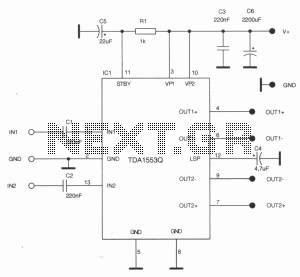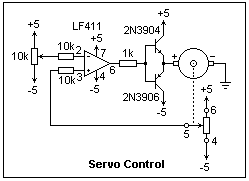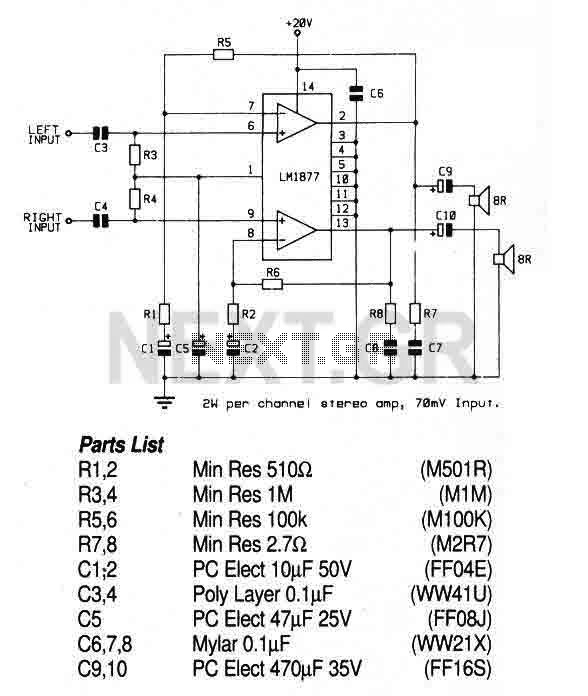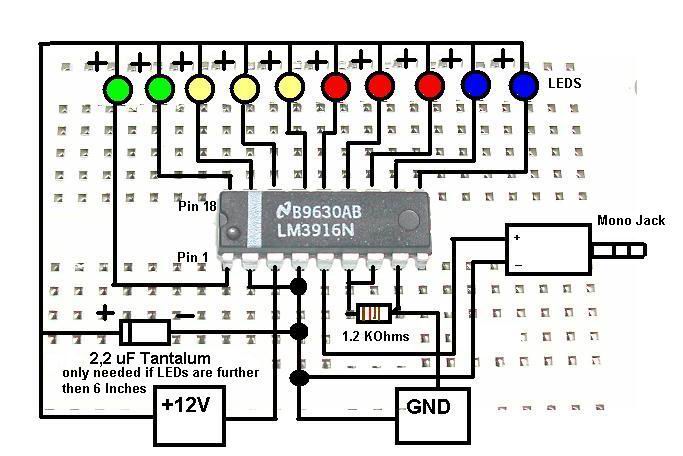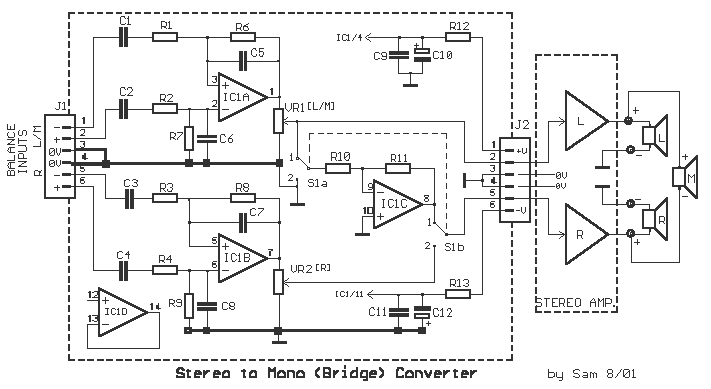
Stereo reverb system
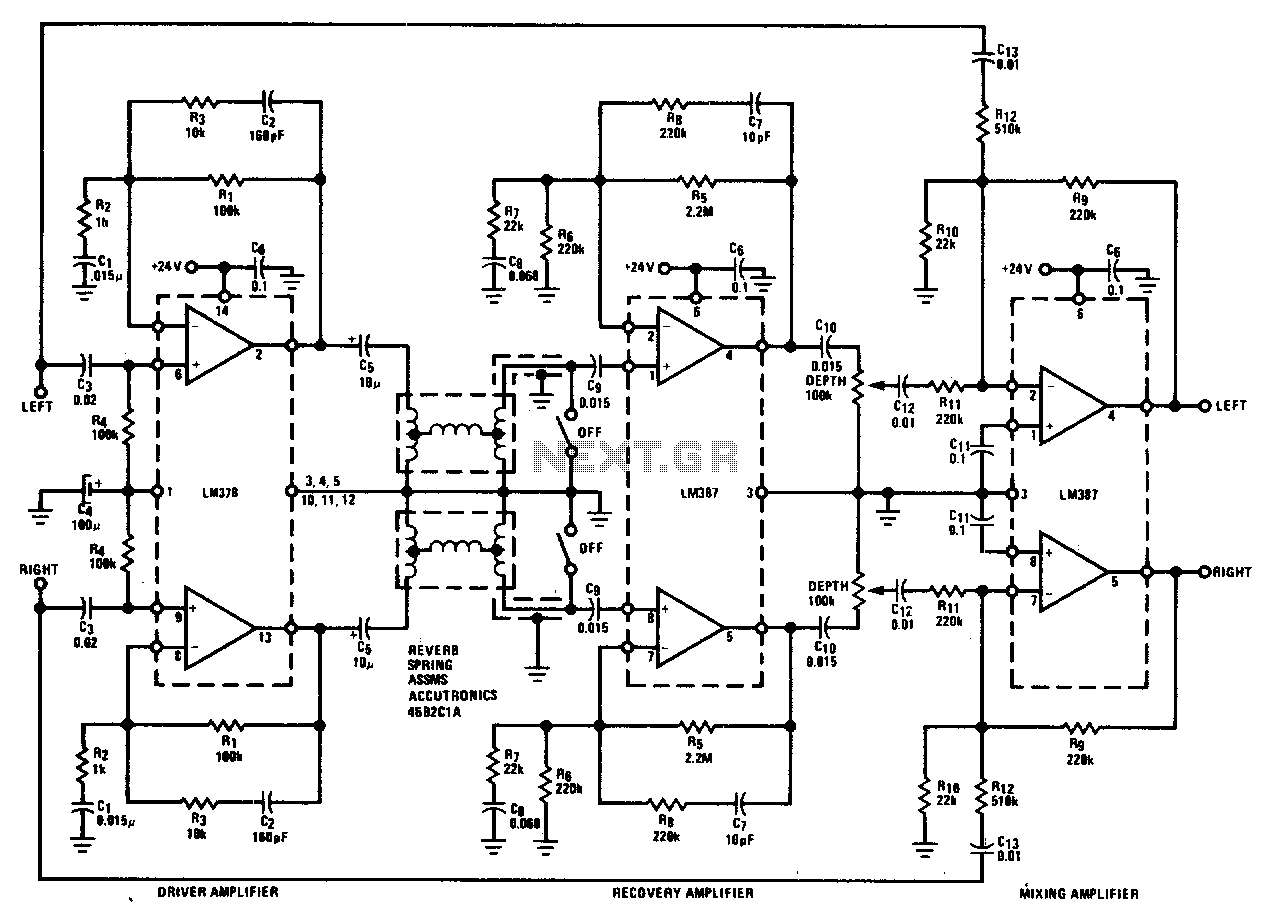
The LM378 dual power amplifier serves as the spring driver. The recovery amplifier is a low-noise dual preamplifier. Mixing of the delayed signal with the original is accomplished using another LM387 configured in an inverting summing arrangement.
The LM378 is a dual power amplifier designed to provide high output current and voltage, making it suitable for driving loads such as springs in various applications. Its architecture allows for efficient amplification, which is critical in applications requiring precise control and responsiveness.
The recovery amplifier, characterized as a low-noise dual preamplifier, is essential for minimizing signal distortion and enhancing signal integrity. This component is particularly valuable in systems where signal fidelity is paramount, such as in audio processing or sensor signal conditioning.
To achieve the mixing of the delayed signal with the original, the LM387 is employed in an inverting summing configuration. This configuration allows for the combination of multiple input signals, producing an output that is the weighted sum of the inputs. The inverting nature of the configuration ensures that the phase of the mixed signal is inverted, which can be beneficial in certain applications where phase relationships are critical.
In this setup, the LM387's low noise characteristics further enhance the performance of the system by reducing unwanted signal artifacts during the mixing process. The use of these amplifiers in tandem allows for a robust signal processing chain that is capable of handling dynamic range and maintaining high fidelity across the signal path. The overall design is optimized for applications that require precise control over signal mixing and amplification, making it suitable for advanced electronic systems.The LM378 dual power amplifier is used as the spring driver. The recovery amplifier is a low noise dual preamplifier Mixing of the delayed signal with the original is done with another LM387 used in an inverting summing configuration.
The LM378 is a dual power amplifier designed to provide high output current and voltage, making it suitable for driving loads such as springs in various applications. Its architecture allows for efficient amplification, which is critical in applications requiring precise control and responsiveness.
The recovery amplifier, characterized as a low-noise dual preamplifier, is essential for minimizing signal distortion and enhancing signal integrity. This component is particularly valuable in systems where signal fidelity is paramount, such as in audio processing or sensor signal conditioning.
To achieve the mixing of the delayed signal with the original, the LM387 is employed in an inverting summing configuration. This configuration allows for the combination of multiple input signals, producing an output that is the weighted sum of the inputs. The inverting nature of the configuration ensures that the phase of the mixed signal is inverted, which can be beneficial in certain applications where phase relationships are critical.
In this setup, the LM387's low noise characteristics further enhance the performance of the system by reducing unwanted signal artifacts during the mixing process. The use of these amplifiers in tandem allows for a robust signal processing chain that is capable of handling dynamic range and maintaining high fidelity across the signal path. The overall design is optimized for applications that require precise control over signal mixing and amplification, making it suitable for advanced electronic systems.The LM378 dual power amplifier is used as the spring driver. The recovery amplifier is a low noise dual preamplifier Mixing of the delayed signal with the original is done with another LM387 used in an inverting summing configuration.
